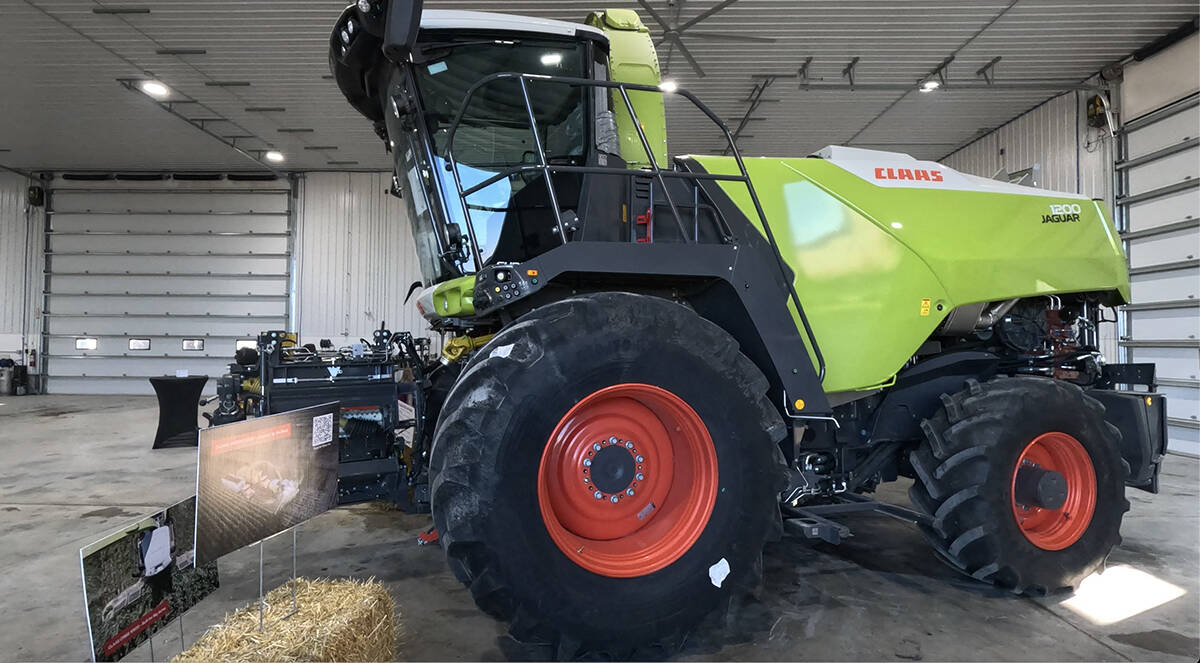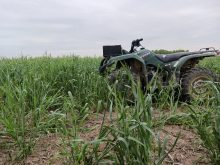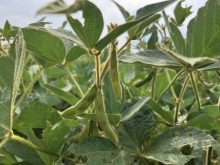As the incidence of herbicide-resistant Canada fleabane rises in central and eastern Ontario to match the southwest, so too does the awareness that targeted tank mixes and lengthened crop rotations are keys to combatting the weed in soybeans.
“They’ve gotten the handle on Canada fleabane in western Ontario,” Corteva Agriscience’s Eastern Region Agronomist Marc Maisonneuve told Farmtario.
But in the east, growers are watching closely for resistant fleabane, and “they’re on high alert” in the Peterborough area this year, he said.
Read Also

Claas brings 1000 Series SP forage harvesters to Canada
In mid-August, Claas unveiled its new line of Jaguar forage harvesters at an event in Visalia, California, deep in the heart of that state’s dairy region.
Why it matters: The presence of resistant fleabane can cause yield losses of up to 65 per cent in soybeans.
Glyphosate-resistant varieties of the annual weed – which can set seed either in the fall or spring – were first recorded in Essex County in 2010 and quickly spread eastward.
Now, with awareness increasing across the province about herbicide resistance in both fleabane and waterhemp, the knowledge gained as researchers took on those early arrivals is being applied more widely.
Maisonneuve believes there’s still some catch-up needed but, with glyphosate prices rising to unprecedented levels, he expects farmers across the province will be open to the message to diversify their weed control modes of action.
Dr. Peter Sikkema of the University of Guelph’s Ridgetown Campus has been leading a team of researchers tracking the herbicide-resistant varieties since their 2010 arrival.
By 2017, resistance in the weed – which produces up to 200,000 wind-blown seeds per parent plant – had traversed the southern portion of the province and reached the Quebec boundary in Glengarry County.
“Within six growing seasons it travelled 830 kilometres,” Sikkema told Farmtario. “This weed moved really rapidly across the province.”
For years even before widespread herbicide use, Canada fleabane was a minor inconvenience because it’s killed relatively effectively by shallow tillage. Then, as reduced tillage or no-till gained in popularity especially going into a crop of soybeans, herbicides continued to perform the task tillage did in previous years – killed the fleabane.
Resistance changed all that. First, it was Group 2 resistance and now Group 9-resistant varieties have also been recorded in several Ontario counties.
Knowing that a return to the plow or cultivator was unlikely due to the soil health benefits of no-till, Sikkema and his team spent the past 11 years garnering knowledge about resistant varieties of the weed.
First, they tracked potential yield loss if resistant fleabane takes hold in a field. In winter wheat, which tends to outcompete most fleabane, the average loss is 11 per cent. In corn, which can get ahead of fleabane if it quickly establishes a canopy and is more often preceded by tillage, the average loss is still “way more” than wheat at 54 per cent.
But in soybeans, if glyphosate-resistant Canada fleabane is present, yield loss can be a whopping 65 per cent, with the average on the Ridgetown Campus trials ranging well above that.
“Canada fleabane will just grow way above the soybean canopy,” Sikkema explained.
Maisonneuve concurred. “You really see the difference in a field if you follow it from year to year and there’s not an effective strategy” for getting rid of the herbicide-resistant weed.
“It is a disaster by year four, especially if there’s not a good crop rotation. It will just decimate a crop of soybeans.”
From identifying potential yield loss, Sikkema’s team turned to research into diversifying herbicide modes of action to get away from relying on glyphosate alone. That work identified some tank mixes – both pre-plant and post-emergence – that will effectively tackle the fleabane. Recommendations based on the Ridgetown team’s work so far are available on the provincial ag ministry’s website at www.omafra.gov.on.ca/english/crops/field/weeds/canada_fleabane.htm.
Growers of IP and Roundup Ready beans are limited in their options to pre-plant control only. But, Sikkema notes that over 90 per cent effectiveness on all weeds is possible through the recommended mixes.
But tank mixes shouldn’t be the only area of focus, Maisonneuve cautions. If and when tillage is appropriate, consider it.
“If the soil is tilled even half an inch, 90 per cent of the Canada fleabane seeds won’t germinate,” he said.
Also consider broadening crop rotations, including cover crops.
Across the eastern border in Quebec, Maisonneuve says input retailers and farm organizations have been hosting grower meetings this year and last to spread the word about resistant fleabane’s spread. There has been “a general conversation” during those meetings about alternatives to glyphosate – something an increasing number of Ontario growers have already begun considering.
Sikkema notes fleabane will always be present in Ontario because it readily colonizes edge-of-field environments like ditches, fencerows and buffer strips. So resistant varieties will always be a threat.
“But I do think Ontario farmers have figured out how to manage (the resistant fleabane),” he added.
The research team he leads, meanwhile, will continue its field trials comparing tank mixes and other control strategies. Their objective, he says, is to “incrementally advance the knowledge” about the control of herbicide-resistant weeds.
“It’s a never-ending challenge. I think we have good options now and, hopefully, if you call me a few years from now I’ll have slightly better options to recommend.”













